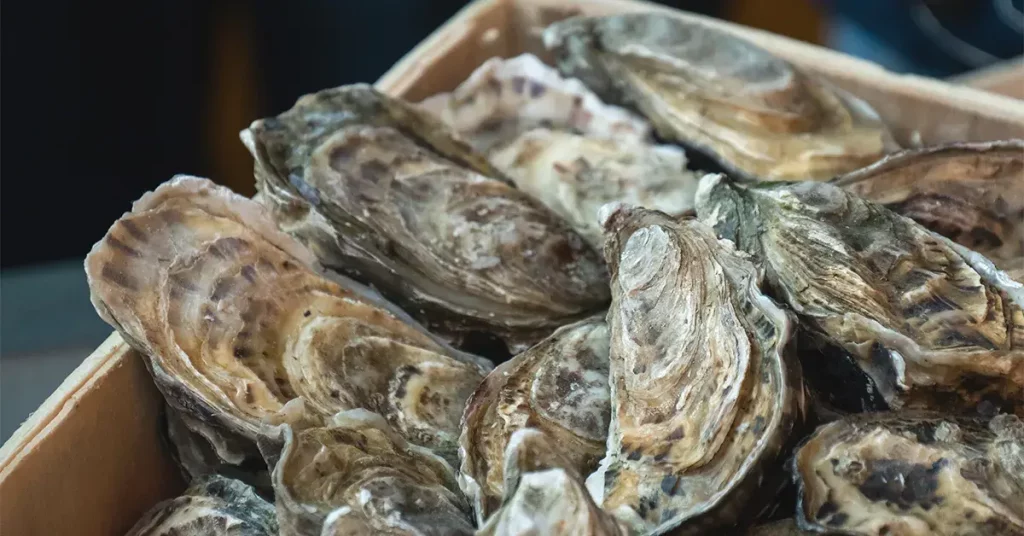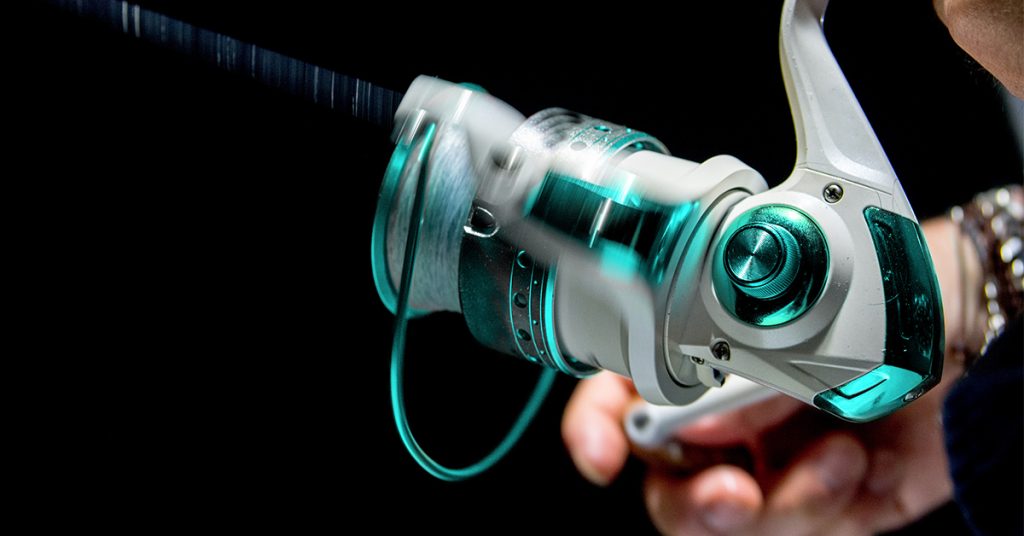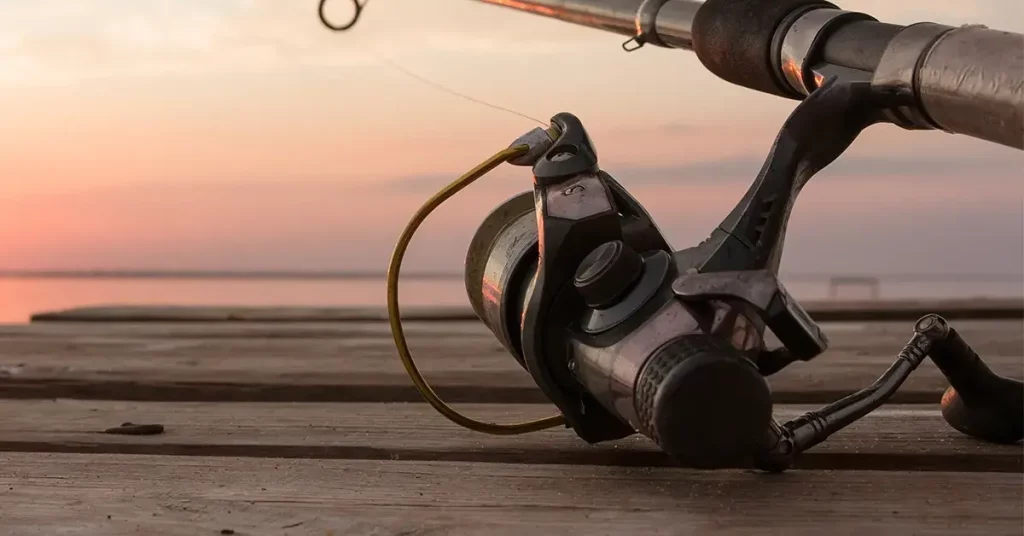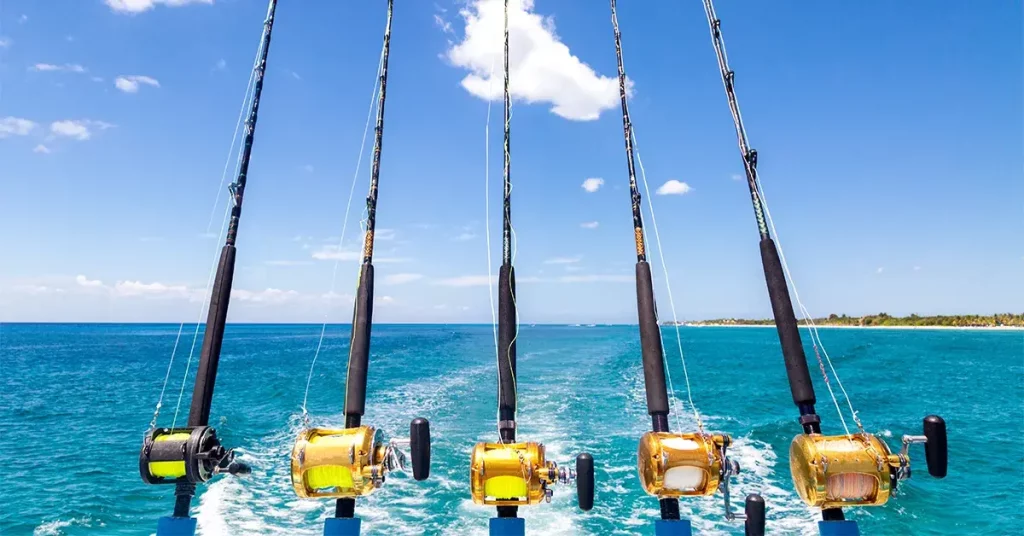Oysters have long been a humble food. They’ve been a popular food for humans for thousands of years, and we’ve been harvesting them since before the days of the Roman Empire.
Oysters are fairly easy to catch and are farmed in many countries around the world. While they were once considered a humble food, in many places they’ve now become a delicacy. Walk into a modern upscale restaurant, and a plate of fresh oysters can set you back a decent chunk of change.
However – fresh oysters can still be found in the wild – and can be a rewarding experience to harvest for yourself.
Where Can You Catch Oysters?
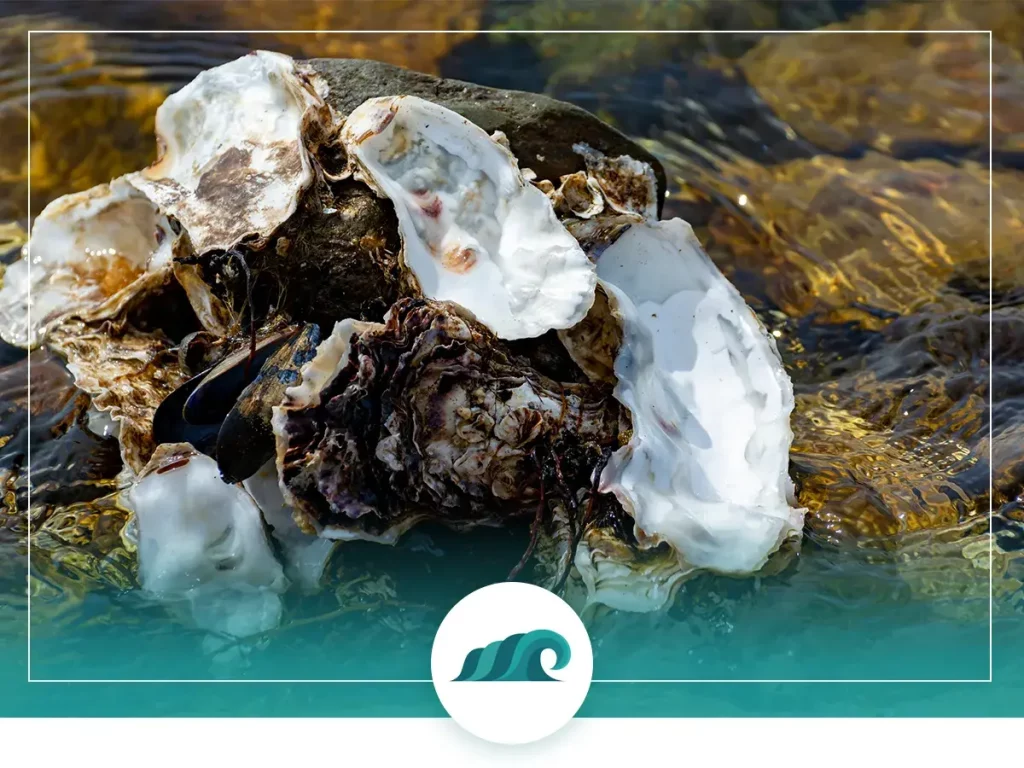
Peak oyster harvesting season happens during colder months, especially in late winter and early spring. Traditionally, people harvest oysters during months containing the letter “R”, meaning September to April.
Nevertheless, oyster harvesting is a year-long practice. Oysters spend their time reproducing during warmer months of the year, from May to August. Still, in warmer climates such as the Caribbean, they can spawn throughout the year.
Oysters are found in coastal areas throughout the world. The oysters we eat today are largely farmed, however it is quite easy to find them in their natural habitat. Since some oysters create beautiful pearls, they have often been a symbol of luxury.
But will you ever find a pearl in your oyster? Unfortunately, the answer is no. Pearl oysters belong to a different family than the ones we eat. In this case, we’re talking about true oysters.
True oysters are part of the Ostreidae family. They live in estuaries partially protected by land. Partly enclosed areas allow oysters and other shellfish like clams, mussels, and scallops to thrive. A healthy and balanced habitat is important for these creatures. Oysters survive in areas of shallow water with a hard bottom to avoid getting buried under the soil. Their colonies are called beds or oyster reefs.
Oysters are filter feeders: they eat phytoplankton by filtering water through their bodies. Salinity levels will vary based on where the oysters live. This will depend on their proximity to fresh water sources and to ocean water. They live in water temperatures between 68-90 degrees Fahrenheit. Mature oysters can withstand more variation in temperature.
How to Catch Oysters?
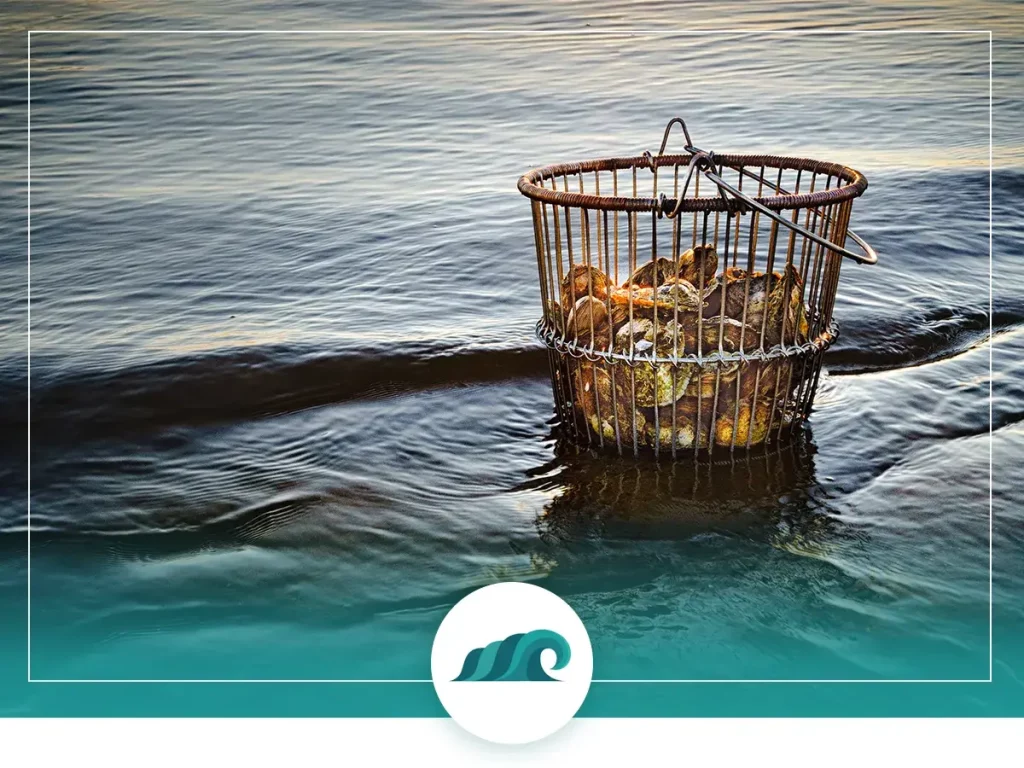
Oyster harvesting is a relatively easy activity. They’re arguably the easiest seafood to catch.
Here’s how to get started:
- Wait for nice, clear weather.
- Wait a few days after heavy rain before collecting your oysters to avoid collecting contaminants along with them.
- Make sure to only harvest oysters from approved locations. Since they are filter feeders, they can sometimes absorb chemicals or toxins that cannot be removed, even from cooking.
- It’s preferable to go harvesting during the daytime while ocean tides are low. That being said, be careful not to get stuck as the tide comes back in.
Once you find your collection site, watch out for foul smells and dead oysters or dead fish, which could be a sign of an unhealthy habitat. You can harvest oysters from inside a small boat, or you can stand right in the water.
You only want to harvest live oysters. These ones will close their shell when you touch them. Don’t grab oysters with open shells. You can use a basic tool such as a hammer or a screwdriver to break oysters off a cluster. Harvesters often keep them in a bucket, which they can attach to themselves with a cord so it can float along following them as they collect.
You’ll want to harvest larger oysters for a bigger snack, but also make sure to check if your area has a minimum size. Always make sure not to harvest too many oysters in areas that have limits to avoid a hefty fine.
Once you’ve gathered all you need, keep them in a cool place like your fridge or on ice. Freeze any oysters if you don’t plan on eating them within approximately 5 days of harvesting.
Oyster Types
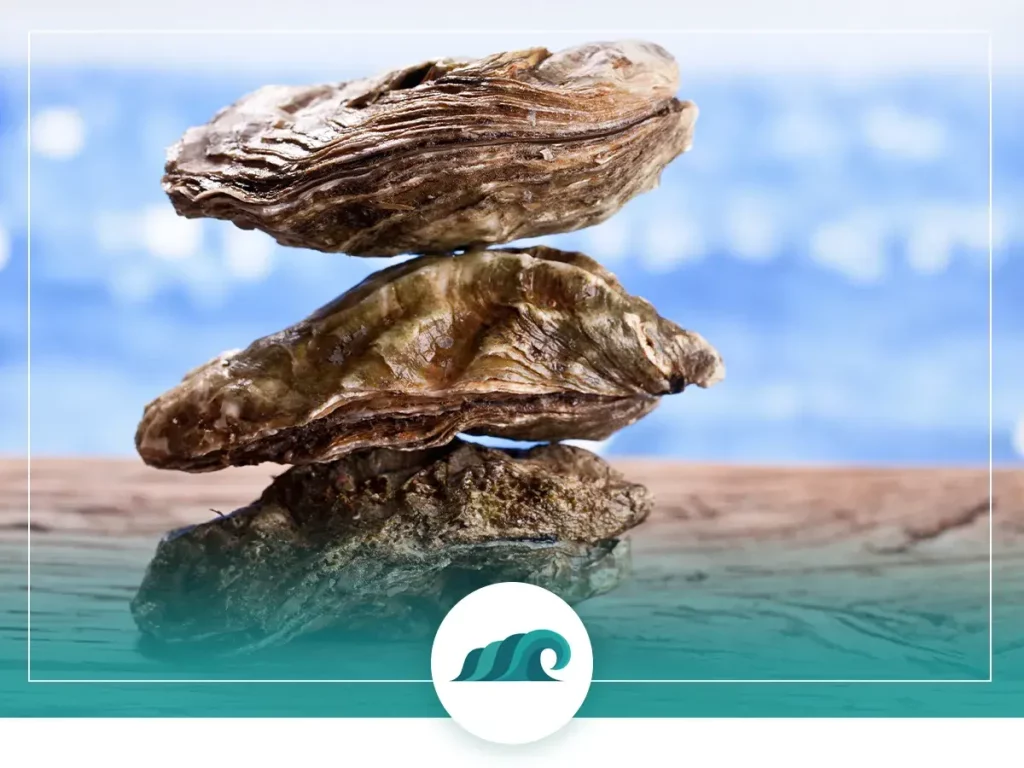
The most common oysters are the Eastern American Oyster and the Pacific Oyster.
The eastern American oyster is found in the Atlantic Ocean from North America all the way down to South America including Canada, the United States, Mexico, and Argentina.
The Pacific oyster is found in the Pacific Ocean from Asia all the way to the western coast of America, in countries such as Japan and the United States. There are so many different subspecies of oysters varying in size and taste that you’d be hard pressed to try them all.
Gear Needed
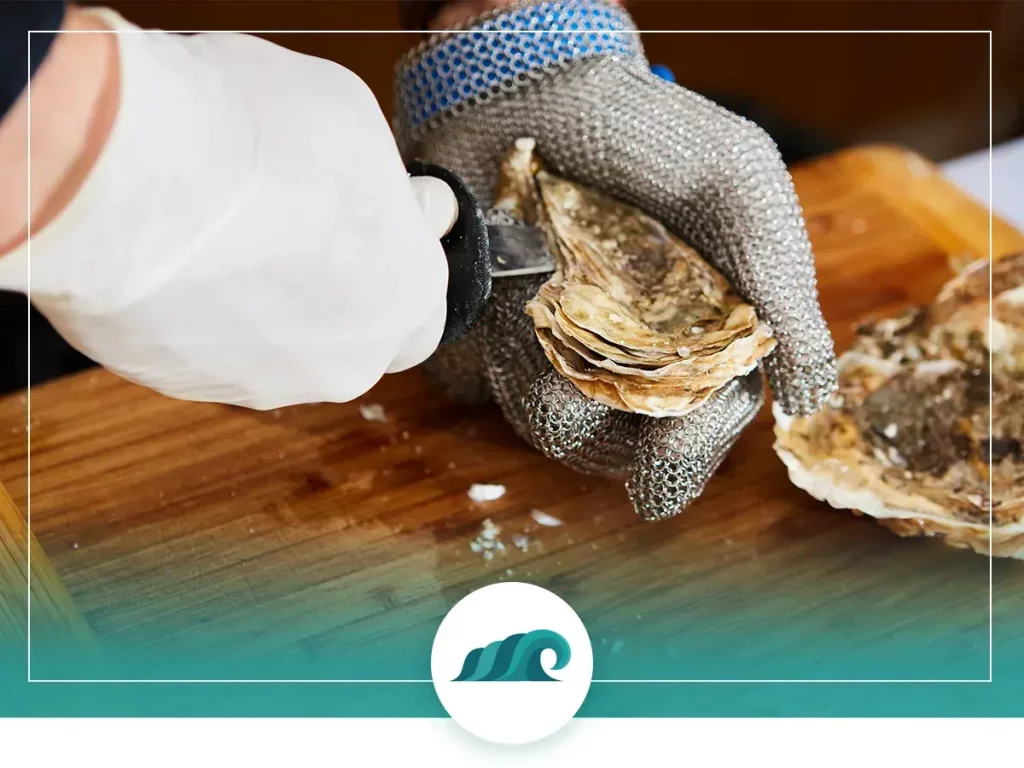
Whenever you’re collecting shellfish at low tide, you’ll need to wear the right attire to keep from getting soaked to the bone. A good pair of waterproof boots or waders is a must. Check out the LaCross Men’s Hunting Boot for a great all-around option.
A good pair of waterproof gloves comes next. These are needed to keep your hands and fingers warm and protected from the chill.
Next, you’ll need some way of prying the oysters free if their stuck to a rock or other debris. A long flat head screwdriver can work well for this, or alternatively a dive knife, or even a rubber mallet can all work well.
Once you’ve collected a decent number of oysters, you’ll need somewhere to store them as you collect more. A 3- or 5-gallon bucket all work well for this, and double as a place to rinse off your harvest.
Lastly, you’ll need a shucking knife to extract the meaty treasure inside the shell. While there certainly are cheaper shucking knives on the market, this oyster shucking set is built to last and will make your entire experience that much easier.
Rules & Regulations
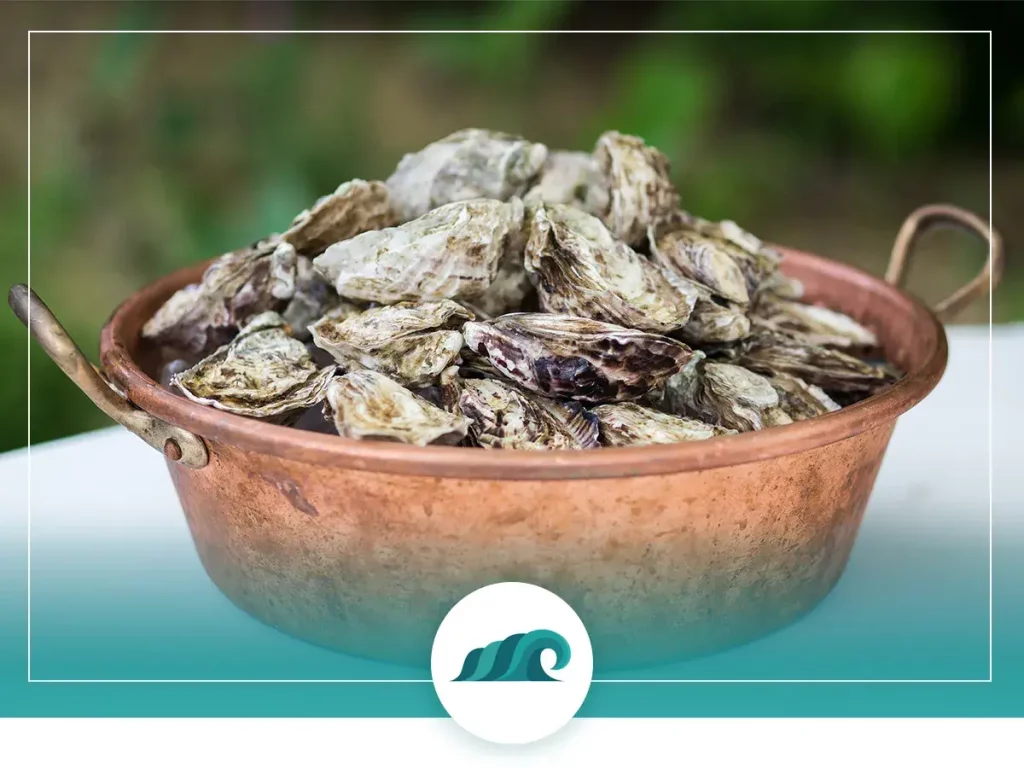
Before you go out there grabbing oysters from the seas, you’ll need to check your local regulations. Don’t forget to check if it is oyster harvesting season.
In many places you’ll need a shellfish license to harvest these critters. Learning the rules surrounding harvesting will make your experience safer while also protecting oyster populations in your area.
How to Prepare Oysters?
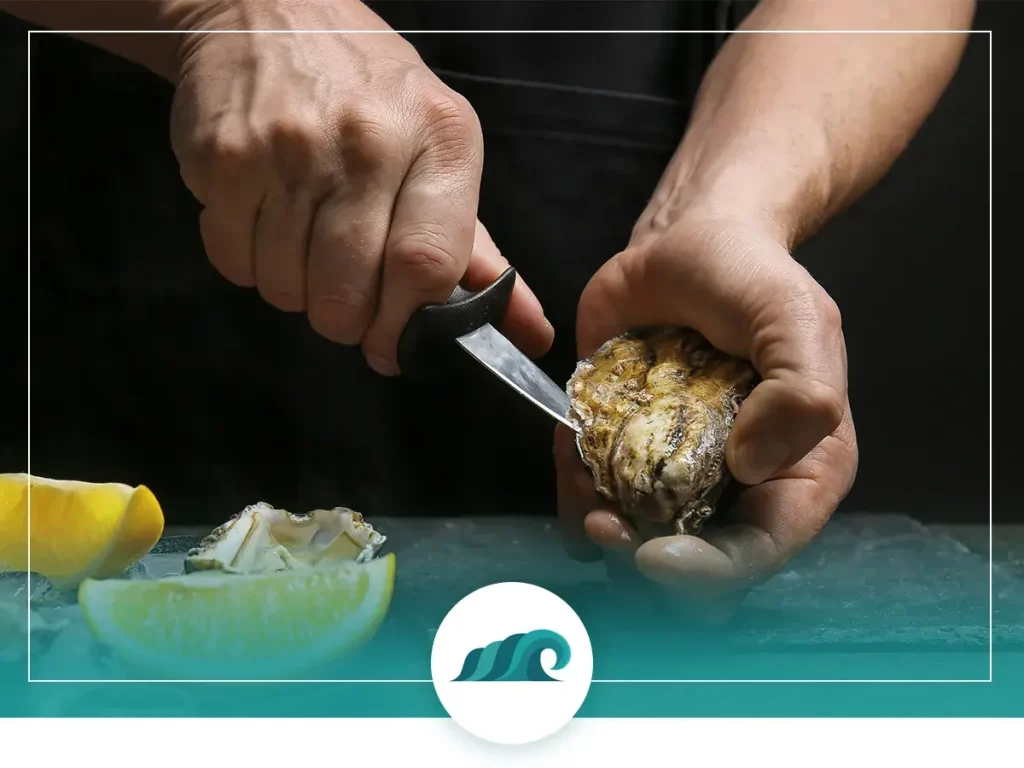
While other shellfish might be easier to prepare, the mighty oyster is second to none when it comes to flavor and presentation.
How to Shuck Oysters?
First, you’ll need a good shucking knife. Theses shuckers are an essential tool to any oyster harvester.
Holding the oyster in one hand and the shucking knife in your other hand, place the tip of the blade in the oyster hinge (the small hole near the pointy end).
Apply pressure and twist the knife. Lever the knife upwards or keep twisting to open the shell. Cut the meat of the oyster loose from the shell while trying to keep the brine from spilling out.
How to Cook Oysters?
Oysters can be eaten raw straight from the shell. Keep in mind there is always some risk involved when eating raw seafood, so do so at your discretion.
In today’s kitchens, they’re often served raw with lemon, hot sauce and other acidic seasonings. However, there are many other ways to cook with oysters.
In many regions, such as South-East Asia, the preferred way to prepare oysters is cooked. They can be grilled, baked, roasted, steamed, fried and even stewed. Read on for some of my favorite ways to cook these delicious morsels.
Recipes
Oysters Rockefeller
Ingredients:
- 1 dozen fresh oysters in the half shell
- 1 small onion, chopped
- 1 cup grated Romano or Parmesan cheese
- Juice from one lemon
- Salt and pepper to taste
- 1 package fresh spinach, chopped
- ¼ cup butter
Directions:
- Add butter and onion to skillet on medium. Cook until soft and translucent. Add spinach and cook until wilted. Stir in grated cheese, lemon juice, and salt and pepper.
- Place oysters on baking tray and add spinach and onion mixture onto each shell.
- Bake at 450° until oyster are cooked through. Approximately 6 to 8 minutes.
- Serve and enjoy!
Breaded Baked Oysters
Ingredients:
- 1 dozen fresh oysters in the half shell
- 1 stick butter
- Juice from one lemon
- ¾ cup Panko breadcrumbs
- 2 tablespoons fresh herbs (chives, parsley, or basil)
- 1 teaspoon freshly grated lemon zest
- Lemon wedges for serving
Directions:
- Preheat oven to 425°.
- Take the shucked and cleaned oysters and arrange them facing upward on a baking pan. Some salt spread over the pan will help keep them from tipping over.
- Melt half the butter in a pan over medium heat and add breadcrumbs. Cook until they’re lightly browned.
- Combine the herbs, lemon juice, lemon zest and the remaining butter. Sautee for 1-2 minutes.
- Top each oyster with the butter-herb mixture and sprinkle with breadcrumbs.
- Bake oysters for 8 to 10 minutes until golden brown.
- Top with fresh herbs and serve with lemon wedges.

